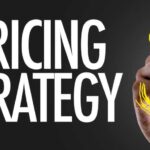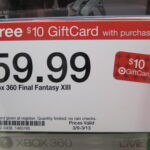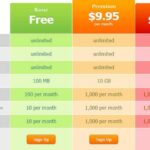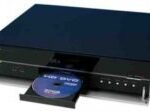Too many businesses price their product or service based solely on the competition. While it is good to understand what a competitor charges to know where you stand in relation to the competition, each business should establish its own price strategy.
The following quiz was designed to test your knowledge of pricing strategies. Are you ready to put your knowledge to the test?
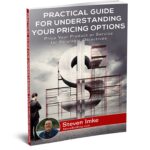
In fact, I believe that pricing is such an overlooked marketing strategy that I dedicated an entire book to it called: Practical Guide for Understanding Your Pricing Options.
The Competition Understands the Customer Better Than You. They Use That Experience to Set Prices Appropriately. Discover A Strategy to Find Your Right Price
Billing by inputs (time) is a legacy of the industrial revolution. For knowledge work, it is unfair to both consumers and providers. There is a better alternative.
One of the first steps when pricing is to make sure that the business understands its break-even point. The following video lesson from Boot Camp: Steps to Owning your Business describes how and why a business needs to understand its break-even point.
Since the one thing that every business can control is the price of their product or service, I have a break-even analysis tool you can download to help you.
Pricing Concepts
When it comes to actually pricing a product or service, there are a few key concepts you will need to understand. The first concept is the nuance of fixed vs. dynamic pricing mechanisms.
Another key concept is pricing on the margins.
To determine at what point changing a price will affect sales, a business needs to consider price elasticity.
With a good understanding of your break-even and price elasticity, consider the role of microeconomics in choosing the right price.
Many small business owners and employees have spent a lifetime honing their craft or have invested in sophisticated equipment to deliver a service. When these are not visible to the customer, most will discount the value that you provide. Here are some ways to make your customer more aware of the value of what you offer and thereby increase their perceived value of what you do.
When a customer thinks that you are gouging them, even if you are not, they will take it out on your brand.
Pricing Strategies
When it comes to pricing a product or service, there are several different pricing strategies to choose from.
The following paper looks a 14 pricing strategies businesses should consider when maximizing profits.
Paper: Pricing Strategies
Here is some additional information on using pricing as a competitive advantage.
Sometimes, the best price is not to list a price at all and allow the customer to name their own price with a “Pay What You Want” strategy, and here is how to make the most of it.
While most businesses use a market-led or sales-led approach, choosing a product-led – foot in the door approach by offering a free version to get customers to consider your value ladder is a viable strategy, especially with online or SaaS type products.
Pricing Tactics
Now that a business has considered what it should charge when it comes to selling products, there are a few other considerations. The first is to end your list price with $.99
Also, a business should consider the relative price depending on the value of its offering.
And how a consumer’s need for a bargain fills an emotional need.
There is no better way to lose a sale than to not include a price on an item when prospects can browse your items.
What is often lost in any discussion about pricing is opportunity cost. Here are three ways marketers can distort a consumer’s perception of opportunity costs and increase their satisfaction in the process.
Of course when the customer has to pay has a huge impact on how they fell about the purchase.
Often, an effective pricing strategy is to offer financing. This is especially advisable to cushion the shock of a large price tag.
Another effective pricing technique is to offer several different pricing options for the customer to choose from.
The higher the price, the more valuable the product or service is perceived. You can create an expectation of quality simply by offering it a very high price.
Decoy pricing is another tactic that can make your price seem more reasonable.
If you can add something for free in an order, it can make your product or service irresistible.
Just to be clear, the margin is the difference between your Direct Cost to deliver a service or a product (often called COGS or Cost of Goods Sold) and the price you charge the customer for that product or service. Margin is used to pay other business expenses. Too often, especially when it comes to hobbies or craft ideas, businesses price their products too low.
The same can be said when pricing for freelancing services.
And finally, with respect to pricing, be sure to consider the viewpoint of the prospective client when providing your price.











